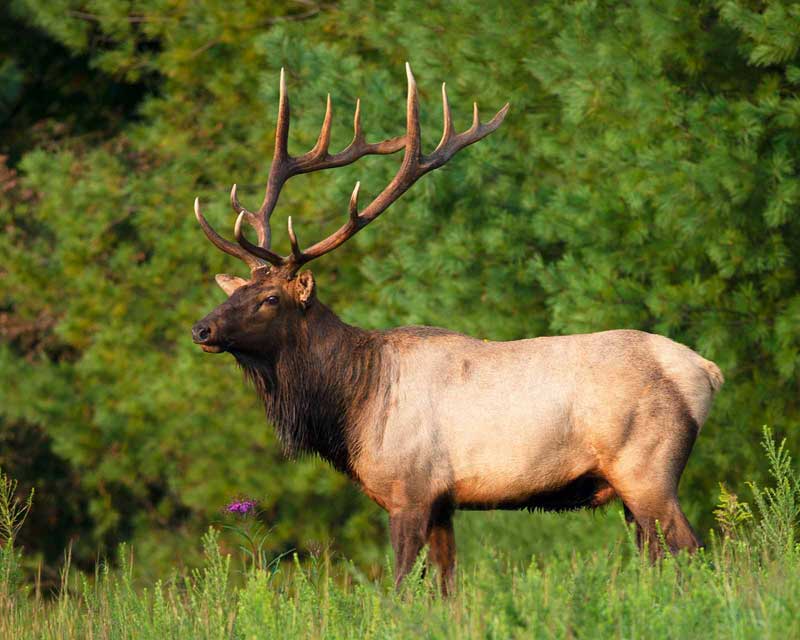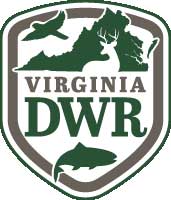Over ten years after the successful restoration of elk to their historic Virginia range, the Virginia Department of Wildlife Resources (DWR) continues to accept applications for its annual elk hunt in late March. The fact that an elk season in Virginia can even be considered is a testament to successful wildlife management and a growing and healthy elk herd.

At one time, states like Pennsylvania, Wisconsin, Tennessee, Kentucky, Virginia and others had a healthy elk population. As settlers made their way into these states, the elk’s range slowly eroded, and the “eastern elk” became extinct. At one time, this subspecies could be found across most of the eastern United States.
In an effort to populate the eastern elk’s range with elk once again, biologists from the Virginia Department of Wildlife Resources and Rocky Mountain Elk Foundation have worked to establish a growing and healthy elk herd in the southwestern portion of the state that includes Dickenson County, Wise County, and Buchanan County.
“Instituting the first-ever managed elk hunt a mere decade after restoration is an indicator that the state’s elk herd is growing, sustainable and healthy. In short, it marks a conservation milestone for Virginia,” said Mark Baker of the Rocky Mountain Elk Foundation (RMEF).
In addition to providing both funding and volunteer support that led to Virginia’s initial elk restoration in 2012, RMEF, with perhaps the best tagline in the business – Hunting is Conservation – also made key contributions to successful restorations in Kentucky, Missouri, North Carolina, Tennessee, West Virginia and Wisconsin. Working together, states and RMEF are restoring elk herds across much of the eastern United States in elk management zones.
Dating back to 1990, RMEF and its partners completed 1,299 conservation and hunting heritage outreach projects in the above-mentioned states that conserved 146,467 acres of elk habitat.
 “As in the past, we remain committed as an organization going forward to working alongside our state agency partners in supporting and growing elk populations throughout the East and across the country, including here in my home state of Virginia,” said Todd Walker, RMEF board member from McLean.
“As in the past, we remain committed as an organization going forward to working alongside our state agency partners in supporting and growing elk populations throughout the East and across the country, including here in my home state of Virginia,” said Todd Walker, RMEF board member from McLean.
With over 250 elk in Virginia, the herd is healthy and growing. The popularity of the elk restoration project is growing as well. So much so that there is an elk cam to view Virginia elk. You can see the sweeping antlers of a bull elk whenever they walk by.
Virginia residents are now able to enter an annual elk hunt lottery in the spring for a chance to participate in an autumn Virginia elk hunt in the counties of Dickenson, Wise, and Buchanan. This elk hunt coincides with Virginia’s archery deer season in mid-October.
Below is a brief synopsis, with restoration years in parenthesis, of the status of elk in the eastern United States:
- Kentucky (1997): +10,000 elk and the largest population/elk range east of the Mississippi River. The first elk hunting season in Kentucky occurred in 2001 and there were 594 tags available in 2022
- Missouri (2011): +200 elk with five tags available in 2022
- North Carolina (2001): +200 elk with no hunting season as yet established
- Tennessee (1997): +400 elk. The first hunting season occurred in 2009 and there were 15 tags available for 2022.
- Virginia (2012): + 250 elk. Five tags were available for hunting in 2022.
- West Virginia (2016): +80 elk with currently no hunting season
- Wisconsin (1995): +390 elk. Wisconsin held its first elk hunt in 2018. The number of tags for 2022 was not available at press time. Eight tags were issued in 2021.
To include those states listed above, there are currently free-ranging, wild elk in over half of the U.S:
- Alaska
- Arizona
- Arkansas
- California
- Colorado
- Idaho
- Kansas
- Michigan
- Minnesota
- Montana
- Nebraska
- Nevada
- New Mexico
- North Dakota
- Oklahoma
- Oregon
- Pennsylvania
- South Dakota
- Utah
- Washington
- Wyoming
RMEF collaborates with each state wildlife agency, including the Virginia Department of Wildlife Resources, to ensure the future of its elk population and increase its elk range.
The elk restoration success is further proof that we can all be gamekeepers. States east of the Mississippi that went generations without hearing the bugle of a bull elk can take pride that they now have wild bull elk living in their former range.
The Rocky Mountain Elk Foundation and states like Virginia are proving that you can work together to establish a healthy elk herd. The hope is that one day in national parks, on public land, and across private land the next generation can hear the bugle or find the shed of a big bull elk.
For more information about the Rocky Mountain Elk Foundation, contact the organization by visiting rmef.org or calling 1-800-CALL ELK.




























